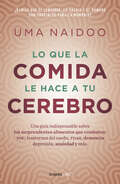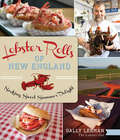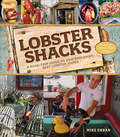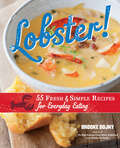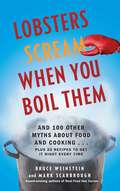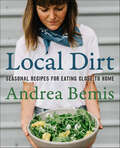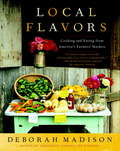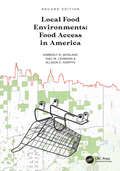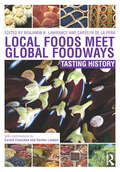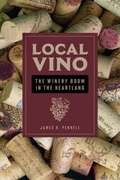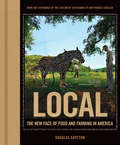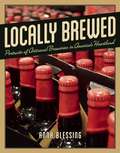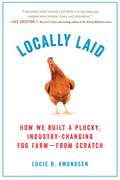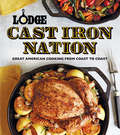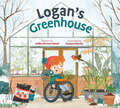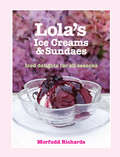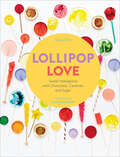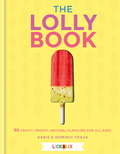- Table View
- List View
Lo Yoga per Pricipianti: Come Imparare lo Yoga a Casa per Essere Più Sani e Perdere Peso
by Dean SandersTi piacerebbe poter eliminare la sensazione di malessere, provare meno ansia, dormire meglio e con la mente serena e sconfiggere la depressione? Da tempi antichissimi le tecniche di yoga sono utilizzate per curare numerosi tipi di disturbi, permettendoti di vivere una vita più felice e più sana! L'utilizzo di tecniche yoga ti aiuterà anche in caso di malattie croniche e infiammazioni, a rafforzare il tuo sistema immunitario e a migliorare i livelli di energia, la concentrazione, la felicità in generale e molto altro ancora! Più emozioni positive e meno depressione! In questo libro ti sveliamo i segreti che i professionisti dello yoga utilizzano per sentirsi più sani che mai! Grazie a decenni di strategie collaudate, questo ebook ti mostrerà il modo più veloce ed efficace per usare lo yoga per il tuo benessere! Al suo interno, troverai tecniche efficaci che non necessitano di attrezzature costose o corsi. La guida comprende: - Istruzioni per i principianti - Come trovare (o ritrovare) la forma migliore - Come perdere peso - Come diventare più flessibile - Come sconfiggere la depressione - Come eliminare lo stress - Come ridurre ed eliminare l'ansia - Come aumentare l'energia - Come dormire meglio - Come migliorare la propria consapevolezza. - Come superare il malessere E MOLTO ALTRO! Se vuoi essere più sano, curare i tuoi disturbi o migliorare la concentrazione e il benessere, allora questa guida è per te. -> Vai in cima alla pagina e fai clic su aggiungi al carrello per acquistarla immediatamente Disclaimer - Dichiarazione di esclusione di responsabilità L'autore, il traduttore, l'editore e / o i titolari dei diritti non accettano reclami, non rilasciano promesse o garanzie in merito all'accuratezza, alla completezza o all'adeguatezza dei contenuti di questo libro e declinano espressamente la responsabilità per errori o omissioni nei contenuti. Questo pro
Lo que cuenta el caldero
by Leonor EspinosaPor primera vez Leonor Espinosa, la chef más destacada de América Latina en la actualidad, publica las crónicas culinarias que ha escrito a lo largo de su trayectoria y en los miles de recorridos que ha hecho por Colombia y otros lugares del mundo. Lo que cuenta el caldero reúne el legado gastronómico Leonor Espinosa a través de paisajes sonoros y humeantes y sus experiencias en territorios de Colombia en los que la cocina es protagonista. Acompañados de ilustraciones de Elizabeth Builes y recetas cuidadosamente seleccionadas, cada uno de los relatos aquí agrupados transmite los sabores y aromas que marcaron la infancia de la autora y revela las preparaciones que hoy son esenciales en su fogón: el plátano maduro, el suero costeño, el mote de queso y la yuca "sancochá", entre otras.
Lo que cuenta el caldero
by Leonor EspinosaPor primera vez Leonor Espinosa, la chef más destacada de América Latina en la actualidad, publica las crónicas culinarias que ha escrito a lo largo de su trayectoria y en los miles de recorridos que ha hecho por Colombia. Lo que cuenta el caldero reúne el legado gastronómico Leonor Espinosa a través de paisajes sonoros y humeantes y sus experiencias en territorios de Colombia en los que la cocina es protagonista. Acompañados de ilustraciones de Elizabeth Builes y recetas cuidadosamente seleccionadas, cada uno de los relatos aquí agrupados transmite los sabores y aromas que marcaron la infancia de la autora y revela las preparaciones que hoy son esenciales en su fogón: el plátano maduro, el suero costeño, el mote de queso y la yuca "sancochá", entre otras.
Lo que la comida hace a tu cerebro
by Uma NaidooUna guía indispensable sobre los sorprendentes alimentos que combaten: toc, trastornos del sueño, tdah, demencia, depresión, ansiedad y más. Cuando se trata de la dieta, la mayoría de las personas se preocupa por perder peso y estar en forma, pero lo que comemos afecta no sólo lo que vemos. Estudios recientes han demostrado que la alimentación tiene un efecto profundo en nuestro cerebro y en condiciones de salud mental tan variadas como el Trastorno por Déficit de Atención e Hiperactividad (tdah), la depresión, la ansiedad, los trastornos de sueño, el Trastorno Obsesivo Compulsivo (toc), el Trastorno por Estrés Postraumático (tpep), la demencia y más. Con base en estas investigaciones vanguardistas, la doctora Uma Naidoo —psiquiatra certificada, especialista en nutrición y chef profesional— nos explica las múltiples formas en que los alimentos contribuyen a nuestra salud mental y expone cómo una buena dieta puede ayudar a tratar y prevenir diferentes problemas de salud psicológica y cognitiva. Lleno de datos científicos fascinantes, recomendaciones nutricionales prácticas y deliciosas recetas para desayunos, comidas y cenas, este libro es una guía ideal para sanar tu cerebro y optimizar tu salud mental. «Sin duda alguna, la comida puede ser la influencia más poderosa en el destino de nuestro cerebro. A partir de las principales investigaciones, este libro ofrece todo lo que necesitas para crear un programa nutricional enfocado en optimizar la salud y el desempeño cerebral.» DOCTOR DAVID PERLMUTTER, autor de Cerebro de pan y Purifica tu cerebro
Loaves of Fun: A History of Bread with Activities and Recipes from Around the World
by Elizabeth M. Harbison John HarbisonFrom the pitas of ancient Mesopotamia to the white breads of the modern bakery, kids can explore the globe with more than 30 exciting recipes and activities about the history of bread.
Lobster Rolls of New England: Seeking Sweet Summer Delight (American Palate)
by Sally LermanA lobster roll aficionado reviews forty lobster rolls from restaurants around New England.The mighty lobster roll is best enjoyed at a picnic table under a red umbrella accompanied by the sounds and smells of the sea. The perfect roll is all in the execution, and the variations are subtle but nearly endless—from top-sliced to buttered or mayonnaise-based. Blogger extraordinaire Sally Lerman chronicles her quest for the perfect bite in Lobster Rolls of New England. Savor mouthwatering descriptions of forty coastal lobster rolls, their storied venues, luscious photos and recipes for some of the lobster roll’s best complements. Discover the surprising history of the first trademarked lobster roll. Devour the very best New England has to offer, from Downeast Maine’s Trenton Bridge Lobster Pound to Captain Scott’s Lobster Dock in New London, Connecticut.
Lobster Shacks: A Road-Trip Guide to New England's Best Lobster Joints (2nd Edition)
by Mike UrbanThe newly updated tour of New England's best roadside seafood Lobster Shacks is a fun, road-trip-style guide to the 75 or so best shacks in New England, starting in Connecticut and heading north and east through Rhode Island, Massachusetts, New Hampshire, and Maine. Each shack entry features a lively description which includes historical background, biographical portraits of the owners past and present, highlights from the menu, and driving directions. Scattered throughout the guide you will find feature recipes, lobster shack legends and lore, and information on local fishing fleets. Author Mike Urban is a veteran shack aficionado with years of experience searching for the best shacks and he hit the road again in 2015 to update this new edition. In short, whatever fits the lobster shack zeitgeist and spirit will find its way into this unique guide.
Lobster!: 55 Fresh and Simple Recipes for Everyday Eating
by Brooke DojnyPut on your bib and crack open this collection of 55 mouthwatering lobster recipes. Brooke Dojny provides extraordinary renditions of classics like steamed lobster, lobster bisque, and lobster rolls, as well as inventive new dishes that bring lobster where it’s never been before. Dig into Lobster and Red Bliss Hash, Lobster and Arugula Pizza, and Lobster and Pea Shoot Salad in Toast Cups. Dojny even includes recipes for sides and desserts to round out your lobster meal. Bring your appetite because this is going to be tasty.
Lobsters Scream When You Boil Them
by Bruce Weinstein Mark ScarbroughIs the five-second rule for real? Will eating carrots improve your eyesight? Is your cookware a health hazard? Do spicy foods cool you down? Has your grandmother been lying to you all these years? No, no, no, no, and . . . probably. In this entertaining and informative reference guide, award-winning cookbook authors Bruce Weinstein and Mark Scarbrough take on more than one hundred popular kitchen myths and dish up answers to all your burning questions about food science and lore. No longer must you wait for your butter to reach room temperature before you bake or panic because you forgot to soak your dried beans for dinner. This handy book explains how knowing the truth behind these urban legends can help you be a better chef in your own home and offers twenty-five delicious recipes so you can practice. Whether you're a serious foodie, an avid dieter, a trivia lover, or are just searching for the secret to the perfect cup of coffee, Lobsters Scream When You Boil Them is essential countertop reading and a whole lot of fun.
Local Dirt: Seasonal Recipes for Eating Close to Home (Farm-to-Table Cookbooks #2)
by Andrea BemisThe author of the popular farm-to-table cookbook Dishing Up the Dirt returns with a dazzling collection of inventive recipes using farm-fresh ingredients, inspired by her commitment to supporting the local food movement.For Andrea Bemis, eating locally is a way of life. After all, her and her husband own and operate an organic vegetable farm in the Pacific Northwest, and the produce they grow—from kale and kohlrabi to beets and butternut squash—is at the heart of the meals they serve and eat at their dinner table. They supplement their harvest with food produced by their neighbors, including the ranchers who supply their meat, and the orchardists who provide their fruit.Andrea has always identified as a sustainable eater—until one day, when she opened a can of coconut milk and realized she had no idea where it came from. This propelled her to look more closely at her pantry, taking stock of the other ingredients that may have traveled some distance. Considering the energy used to transport the avocados, olive oil, and lemons to her Northern Oregon kitchen, she came up with an idea—a 30-day challenge to cook and eat only local food grown from local dirt, using ingredients produced within 200 miles of her home.In Local Dirt, Andrea shares her journey through stories, photographs, and more than 80 recipes, re-creating a not-so-distant world when the ingredients cooked and eaten were produced within local communities. Organized by season, the delicious and creative dishes in this truly sustainable cookbook includes Fennel Gratin, Kohlrabi Yogurt Salad with Smoked Salmon, Winter Squash Toast with Honey & Hazelnuts, and Zucchini Swiss Chard & Chickpea Stew. Best of all, the recipes can be adapted to utilize any local fare. Ultimately, Andrea found that the “challenge” she set out for herself wasn’t a challenge at all, but an opportunity to go back to basics, slow down, and connect even more deeply with her community. In Local Dirt, she offers the inspiration, instruction, and advice we need to eat deliciously and sustainably.
Local Flavors
by Deborah MadisonFirst published in hardcover in 2002, Local Flavors was a book ahead of its time. Now, imported food scares and a countrywide infatuation with fresh, local, organic produce has caught up with this groundbreaking cookbook, available for the first time in paperback.Deborah Madison celebrates the glories of the farmers' markets of America in a richly illustrated collection of seasonal recipes for a profusion of produce grown coast to coast. As more and more people shun industrially produced foods and instead choose to go local and organic, this is the ideal cookbook to capitalize on a major and growing trend.Local Flavors emphasizes seasonal, regional ingredients found in farmers' markets and roadside farm stands and awakens the reader to the real joy of making a direct connection with the food we eat and the person who grows it. Deborah Madison's 350 full-flavored recipes and accompanying menus include dishes as diverse as Pea and Spinach Soup with Coconut Milk; Rustic Onion Tart with Walnuts; Risotto with Sorrel; Mustard Greens Braised with Ginger, Cilantro, and Rice; Poached Chicken with Leeks and Salsa Verde; Soy Glazed Sweet Potatoes; Cherry Apricot Crisp; and Plum Kuchen with Crushed Walnut Topping.Covering markets around the country from Vermont to Hawaii, Deborah Madison reveals the astonishing range of produce and other foods available and the sheer pleasure of shopping for them. A celebration of farmers and their bounty, Local Flavors is a must-have cookbook for anyone who loves fresh, seasonal food simply and imaginatively prepared.From the Trade Paperback edition.
Local Food Environments: Food Access in America
by Kimberly B. Morland Yael M. Lehmann Allison E. Karpyn"In this book, Morland, Lehmann, and Karpyn discuss the critical need for healthy food financing programs as a vehicle to improve food access for all Americans. In my career as a public servant, there are very few legislative achievements that I’m prouder of than the Healthy Food Financing Initiative, which started in my home state of Pennsylvania. The program gained status as a proven and economically sustainable federal program that is helping to improve the quality of life in our neighborhoods: by allowing millions access to healthy, affordable food." – Congressman Dwight Evans United States House of Representatives, Pennsylvania, District 3 "If we work together, we can create a healthy food system that is equitable and accessible to all. This book highlights the importance of healthy food projects like grocery stores, farmers markets, co-ops, and other healthy food retail in revitalizing local communities across the country. Without basic nourishment, kids and families simply won’t be successful – which is why this book is a must read." – Sam Kass President Obama’s Senior Nutrition Policy Advisor and Executive Director of Let’s Move! "Morland and colleagues’ new second edition provides an excellent foundation for courses in food policy and community nutrition. Their detailed review of the economics of local and national food financing will open students’ minds to the complexity inherent in measuring and interpreting outcomes." – Robert S. Lawrence, MD, MACP Founder and Former Director of the Center for a Livable Future Johns Hopkins University, Bloomberg School of Public Health Features ● Describes how disparities in food access formed in the United States ● Includes federal policies and programs aimed at addressing food access in underserved areas, including the Healthy Food Financing Initiative ● Features examples of state initiatives that address poor access to food retailers ● Provides methods for program evaluation utilizing principals of implementation and dissemination science ● Includes critical thinking questions and embedded videos aimed to generate discussions on how restricted local food environments in the United States are rooted in economic disparities that impact food access as well as housing, education, and job opportunities
Local Foods Meet Global Foodways: Tasting History
by Benjamin N. Lawrance Carolyn de la PeñaThis book explores the intersection of food and foodways from global and local perspectives. The collection contributes to interdisciplinary debates about the role and movement of commodities in the historical and contemporary world. The expert contributions collectively address a fundamental tension in the emerging scholarly terrain of food studies, namely theorizing the relationship between foodstuff production and cuisine patterns. They explore a wide variety of topics, including curry, bread, sugar, coffee, milk, pulque, Virginia ham, fast-food, obesity, and US ethnic restaurants. Local Foods Meet Global Foodways considers movements in context, and, in doing so, complicates the notions that food 'shapes' culture as it crosses borders or that culture 'adapts' foods to its neo-local or global contexts. By analysing the dynamics of contact between mobile foods and/or people and the specific cultures of consumption they provoke, these case studies reveal the process whereby local foods become global or global foods become local, to be a dynamic, co-creative development jointly facilitated by humans and nature. This volume explores a vast expanse of global regions, such as North and Central America, Europe, China, East Asia and the Pacific, India, sub-Saharan Africa, the Atlantic Ocean, and the USSR/Russia. It includes a foreword by the eminent food scholar Carole Counihan, and an afterword by noted theorist of cuisine Rachel Laudan, and will be of great interest to students and researchers of history, anthropology, geography, cultural studies and American studies. This book is based on a special issue of Food and Foodways.
Local Vino: The Winery Boom in the Heartland
by James R PennellThe art and craft of winemaking has put down roots in Middle America, where enterprising vintners coax reds and whites from the prairie earth while their businesses stand at the hub of a new tradition of community and conviviality. James R. Pennell tracks among the hardy vines and heartland terroir of wineries across Illinois, Iowa, Indiana, and Ohio. Blending history and observation, Pennell gives us a ground-up view of the business from cuttings and cultivation to sales and marketing. He also invites entrepreneurs to share stories of their ambitions, hard work, and strategies. Together, author and subjects trace the hows and whys of progress toward that noblest of goals: a great vintage that puts their winery on the map.
Local: The New Face of Food and Farming in America
by Douglas GayetonCombining stunning visuals with insights and a lexicon of more than 200 agricultural terms explained by today’s thought leaders, Local showcases and explores one of the most popular environmental trends: rebuilding local food movements.When Douglas Gayeton took his young daughter to see the salmon run—a favorite pastime growing up in Northern California—he was devastated to find that a combination of urban sprawl, land mismanagement, and pollution had decimated the fish population.The discovery set Gayeton on a journey in search of sustainable solutions. He traveled the country, photographing and learning the new language of sustainability from today’s foremost practitioners in food and farming, including Alice Waters, Wes Jackson, Carl Safina, Temple Grandin, Paul Stamets, Patrick Holden, Barton Seaver, Vandana Shiva, Dr. Elaine Ingham, and Joel Salatin, as well as everyday farmers, fishermen, and dairy producers.Local: The New Face of Food and Farming blends their insights with stunning collage-like information artworks and Gayeton’s Lexicon of Sustainability, which defines and de-mystifies hundreds of terms like “food miles,” “locavore,” “organic,” “grassfed” and “antibiotic free.” In doing so, Gayeton helps people understand what they mean for their lives. He also includes “eco tips” and other information on how the sustainable movement affects us all every day.Local: The New Face of Food and Farming in America educates, engages, and inspires people to pay closer attention to how they eat, what they buy, and where their responsibility begins for creating a healthier, safer food system in America.
Locally Brewed
by Anna BlessingLocally Brewed celebrates the Midwest's craft brewing movement with profiles of 20 of the area's brewmasters and their breweries. These are entertaining and inspiring stories of the individuals who have been essential in the exponential growth of this movement, as told through vivid interviews, beautiful photography, and dynamic artwork.In just the past 20 years, beer has been transformed from a "low-class" drink to a pluralistic, populist drink with the same stylistic diversity and caring craftsmanship as wine. One of the strongest hotbeds of this cultural shift is in the Midwest, where independently owned craft brewers focus on the creative, artisanal elements of the beer-making process. Locally Brewed explores these trends and the fun, fascinating, and unique details of each brewery, including label art, hand-pull designs, and of course the brews themselves.This is a book that can be enjoyed by the "beer geek" and the casual imbiber alike, as it emphasizes the people behind the beer as well as the beers they brew. Special sidebars and pullouts show what makes each brewery special, weaving together the story of the indie beer movement, relevant to both small-town Midwesterners and big-city beer lovers.
Locally Laid: How We Built a Plucky, Industry-changing Egg Farm - from Scratch
by Lucie B. AmundsenHow a Midwestern family with no agriculture experience went from a few backyard chickens to a full-fledged farm--and discovered why local chicks are better.When Lucie Amundsen had a rare night out with her husband, she never imagined what he'd tell her over dinner--that his dream was to quit his office job (with benefits!) and start a commercial-scale pasture-raised egg farm. His entire agricultural experience consisted of raising five backyard hens, none of whom had yet laid a single egg. To create this pastured poultry ranch, the couple scrambles to acquire nearly two thousand chickens--all named Lola. These hens, purchased commercially, arrive bereft of basic chicken-y instincts, such as the evening urge to roost. The newbie farmers also deal with their own shortcomings, making for a failed inspection and intense struggles to keep livestock alive (much less laying) during a brutal winter. But with a heavy dose of humor, they learn to negotiate the highly stressed no-man's-land known as Middle Agriculture. Amundsen sees firsthand how these midsized farms, situated between small-scale operations and mammoth factory farms, are vital to rebuilding America's local food system. With an unexpected passion for this dubious enterprise, Amundsen shares a messy, wry, and entirely educational story of the unforeseen payoffs (and frequent pitfalls) of one couple's ag adventure--and many, many hours spent wrangling chickens.
Loch Down Abbey: A perfectly witty Scottish cozy murder mystery for fans of Golden Age crime fiction (A Loch Down Abbey Mystery)
by Beth Cowan-Erskine'A sharp and absolutely hilarious spoof of the country house murder mystery... The whodunnit is a fun one... Such a fantastic read. I laughed out loud reading this many times, never more so than at the very end of the epilogue. Terrific stuff' Reader review ⭐⭐⭐⭐⭐ It's the 1930s and a mysterious illness is spreading over Scotland. But the noble and ancient family of Inverkillen, residents of Loch Down Abbey, are much more concerned with dwindling toilet roll supplies and who will look after the children now that Nanny has regretfully (and most inconveniently) departed this life. Then Lord Inverkillen, Earl and head of the family, is found dead in mysterious circumstances. The inspector declares it an accident but Mrs MacBain, the head housekeeper, isn't so convinced. As no one is allowed in or out because of the illness, the residents of the house - both upstairs and downstairs - are the only suspects. With the Earl's own family too busy doing what can only be described as nothing, she decides to do some digging - in between chores, of course - and in doing so uncovers a whole host of long-hidden secrets, lies and betrayals that will alter the dynamics of the household for ever. Perfect for fans of Downton Abbey, Agatha Christie and Richard Osman's The Thursday Murder Club, Loch Down Abbey is a playful, humorous mystery that will keep you glued to the page! Readers love Loch Down Abbey!'Think Downtown Abbey and upstairs and downstairs then think Poirot... an entertaining read that gripped me right to the end' Reader review ⭐⭐⭐⭐⭐'Brilliant fun! Set in beautiful Scotland in the 1930s... The wit and humour are laugh out loud delightful' Reader review ⭐⭐⭐⭐⭐'This was such a fun read!... Like a mashup of Gosford Park, Downton Abbey, a mystery... I loved it... Super fun and enjoyable read' Reader review ⭐⭐⭐⭐⭐'Transports us to 1930s, on a Scottish estate... an extremely enjoyable and humorous fantastic read... I enjoyed the Downton Abbey feeling to it... A great, fun read' Reader review ⭐⭐⭐⭐⭐'Loved this book! Crazy family, intriguing mystery and lovely Scottish setting' Reader review ⭐⭐⭐⭐⭐'A fun, gripping read full of wit, humour, and strong characters... I highly recommend you give Loch Down Abbey a read... you won't regret it!' Reader review ⭐⭐⭐⭐⭐'What an absolute joy this book is! I loved it so much!' Reader review ⭐⭐⭐⭐⭐'What a delight of a book! Full of humour, well drawn characters and a family with issues. Not forgetting a mysterious death' Reader review ⭐⭐⭐⭐⭐
Loch Down Abbey: A perfectly witty Scottish cozy murder mystery for fans of Golden Age crime fiction (A Loch Down Abbey Mystery)
by Beth Cowan-Erskine'A sharp and absolutely hilarious spoof of the country house murder mystery... The whodunnit is a fun one... Such a fantastic read. I laughed out loud reading this many times, never more so than at the very end of the epilogue. Terrific stuff' Reader review ⭐⭐⭐⭐⭐ It's the 1930s and a mysterious illness is spreading over Scotland. But the noble and ancient family of Inverkillen, residents of Loch Down Abbey, are much more concerned with dwindling toilet roll supplies and who will look after the children now that Nanny has regretfully (and most inconveniently) departed this life. Then Lord Inverkillen, Earl and head of the family, is found dead in mysterious circumstances. The inspector declares it an accident but Mrs MacBain, the head housekeeper, isn't so convinced. As no one is allowed in or out because of the illness, the residents of the house - both upstairs and downstairs - are the only suspects. With the Earl's own family too busy doing what can only be described as nothing, she decides to do some digging - in between chores, of course - and in doing so uncovers a whole host of long-hidden secrets, lies and betrayals that will alter the dynamics of the household for ever. Perfect for fans of Downton Abbey, Agatha Christie and Richard Osman's The Thursday Murder Club, Loch Down Abbey is a playful, humorous mystery that will keep you glued to the page! Readers love Loch Down Abbey!'Think Downtown Abbey and upstairs and downstairs then think Poirot... an entertaining read that gripped me right to the end' Reader review ⭐⭐⭐⭐⭐'Brilliant fun! Set in beautiful Scotland in the 1930s... The wit and humour are laugh out loud delightful' Reader review ⭐⭐⭐⭐⭐'This was such a fun read!... Like a mashup of Gosford Park, Downton Abbey, a mystery... I loved it... Super fun and enjoyable read' Reader review ⭐⭐⭐⭐⭐'Transports us to 1930s, on a Scottish estate... an extremely enjoyable and humorous fantastic read... I enjoyed the Downton Abbey feeling to it... A great, fun read' Reader review ⭐⭐⭐⭐⭐'Loved this book! Crazy family, intriguing mystery and lovely Scottish setting' Reader review ⭐⭐⭐⭐⭐'A fun, gripping read full of wit, humour, and strong characters... I highly recommend you give Loch Down Abbey a read... you won't regret it!' Reader review ⭐⭐⭐⭐⭐'What an absolute joy this book is! I loved it so much!' Reader review ⭐⭐⭐⭐⭐'What a delight of a book! Full of humour, well drawn characters and a family with issues. Not forgetting a mysterious death' Reader review ⭐⭐⭐⭐⭐
Lodge Cast Iron Nation: Inspired Dishes and Memorable Stories from America's Best Cooks
by The Lodge CompanyCast-iron skillets, pots, and Dutch ovens are enjoying a surge in popularity among cookware users all across America, and no wonder: it's inexpensive, long lasting, eco-friendly, sustainable, versatile, and healthy! It's no longer just for the camper or cowboy-today, it's a staple piece of cookware in any kitchen helmed by a cook who loves good food. Lodge Cast Iron Nation provides 200 recipes curated from Lodge's very own network of high-profile chefs and cast-iron cookware fans from around the country. Focused on American regional cuisine, it's packed with a diverse array of recipes--from appetizers to desserts and everything in-between. The book reveals the movement behind the resurgence in cast iron's popularity, showcasing exciting new flavor combinations from popular chefs (like John Currence, Lidia Bastianich, Mark Bittman and Peter Kaminsky) and highlighting the cookware's relevance for today's cooks, who are increasingly concerned with issues of sustainability, health, and expense when it comes to their food choices. Packed with classic regional casseroles, soups and stews, new twists on old favorites, plus desserts from the icebox and the oven--this cookbook proves that cast iron isn't just for cornbread. And with in-depth information on how to use and care for cast iron plus surprising tricks and tips--direct from Lodge fans--this cookbook is a comprehensive guide to getting the most out of cast-iron cookware.
Logan's Greenhouse (Where in the Garden? #3)
by JaNay Brown-WoodLogan searches for carrots in his wheelchair-accessible greenhouse in this vibrant exploration of gardening and healthy eating, from the Where in the Garden? picture book series. <P><P>Logan is organizing a pet playdate at his greenhouse for all of his friends, and his treats won’t be the same without his carrots. He’s searched and searched, but his greenhouse is filled with plenty of plants and Logan needs our help to identify them. What do we know about carrots? They’re long, orange, and have bushy leaves at the top—and, wait a moment, is that a carrot? No, that’s a turnip. Where, oh, where could those carrots be? Can you help Logan find them in time for his playdate? The third title in JaNay Brown-Wood and Samara Hardy’s Where in the Garden? picture book series stars Logan, a young boy who uses a wheelchair and accessible tools while gardening in his greenhouse. <P><P> Playful text guides young readers to hunt for visual clues and compare and contrast the unique characteristics of carrots against sweet potatoes, leeks, turnips, and other produce that grows in Logan’s greenhouse. Artist Samara Hardy brings this multi-layered story to life with vivid, cheerful illustrations created from layers of hand painted ink and watercolor texture. Back matter includes a delicious winter carrot soup recipe for little chefs and their adult helpers to try together.
Lola's Ice Creams and Sundaes: Iced Delights for All Seasons
by Morfudd RichardsMorfudd Richards ran a very popular London restaurant called Lola's. When she closed it in 2004 she bought an ice-cream van and started a business - Lola's on Ice - selling her homemade ice creams. From here springs this mouthwatering book, based on four years' experience of mastering the art of making ice cream and the discovery of a passion. Morfudd shares over 100 sumptuous recipes for ice creams, sorbets, granitas and sundaes - for use with an ice-cream maker or by hand. She reveals why beetroot is the perfect partner for blackcurrant in a sorbet; how to make the creamiest vanilla ice cream and why your tastebuds won't fail to be tantalised by burnt orange caramel or rhubarb crumble ice cream or pea and wasabi sorbet. She also teaches you how to marry flavours to create irresistible sundaes, how to make ices throughout the year using seasonal ingredients and provides a handy Q&A section to help solve your ice-cream dilemmas.With eye-catching design and stunning colour photography throughout, this book is THE definitive guide to all things iced and will have you licking your bowl clean to savour every last drop of your delectable desserts.
Lollipop Love: Sweet Indulgence with Chocolate, Caramel, and Sugar
by Anita ChuThe author of Field Guide to Candy shares recipes for the yummiest lollies—from kid-favorite Chocolate-Pop Rock Lollipops to grown-up Beer Lollipops. Brightly colored lollipops are the perfect sweet for children and adults alike—and now these whimsical treats can be made with ease in the home kitchen. Showcasing recipes for every kind of lolly imaginable, the techniques for layering, coloring, and swirling will result in indulgences as beautiful as they are delicious. This inspired little book delivers flavor ideas that go from basic sugar to Almond Butter Crunch to Chocolate-Dipped Peppermint Cream and so much more! For anyone with a penchant for enjoying sugar on a stick, Lollipop Love is the newest authority for making yummy, shareable candies. &“As a novice candy-maker, I appreciated that the basic sugar lollipop recipe accompanies the reader onto almost every page . . . I like that she masterfully educates for any skill level and shows the process to make a batch of lollipops simply.&” —The Food Poet
Lolly Book
by Dominic GesuaThe Lolly Book is full of healthy recipes and foodie flavours with no artificial sweeteners, added flavourings, concentrates or purees - just real fruity goodness. Karis and Dominic, founders of successful healthy ice lolly start-up LICKALIX, offer frozen treats for everyday, special occasions, cocktail hour and more. Each recipe is accompanied by tips and fun fruit facts, plus a full nutritional breakdown. Get the inside scoop on fruit and veg, the low down on sugar and tips on essential equipment. There are lollies for every occasion, from classic Double Strawberry and creamy Mango Lassie to a no-holds barred Ice Lolly Dipping Bonanza and the ultimate healthy kick, Green Goddess, plus boozy poptails,including Peach Bellini and Zesty Margarita. Who knew ice could taste this good?
Lolly Book: 50 Fruity, Frosty Natural Flavours For All Ages
by Dominic GesuaThe Lolly Book is full of healthy recipes and foodie flavours with no artificial sweeteners, added flavourings, concentrates or purees - just real fruity goodness. Karis and Dominic, founders of successful healthy ice lolly start-up LICKALIX, offer frozen treats for everyday, special occasions, cocktail hour and more. Each recipe is accompanied by tips and fun fruit facts, plus a full nutritional breakdown. Get the inside scoop on fruit and veg, the low down on sugar and tips on essential equipment. There are lollies for every occasion, from classic Double Strawberry and creamy Mango Lassie to a no-holds barred Ice Lolly Dipping Bonanza and the ultimate healthy kick, Green Goddess, plus boozy poptails,including Peach Bellini and Zesty Margarita. Who knew ice could taste this good?


